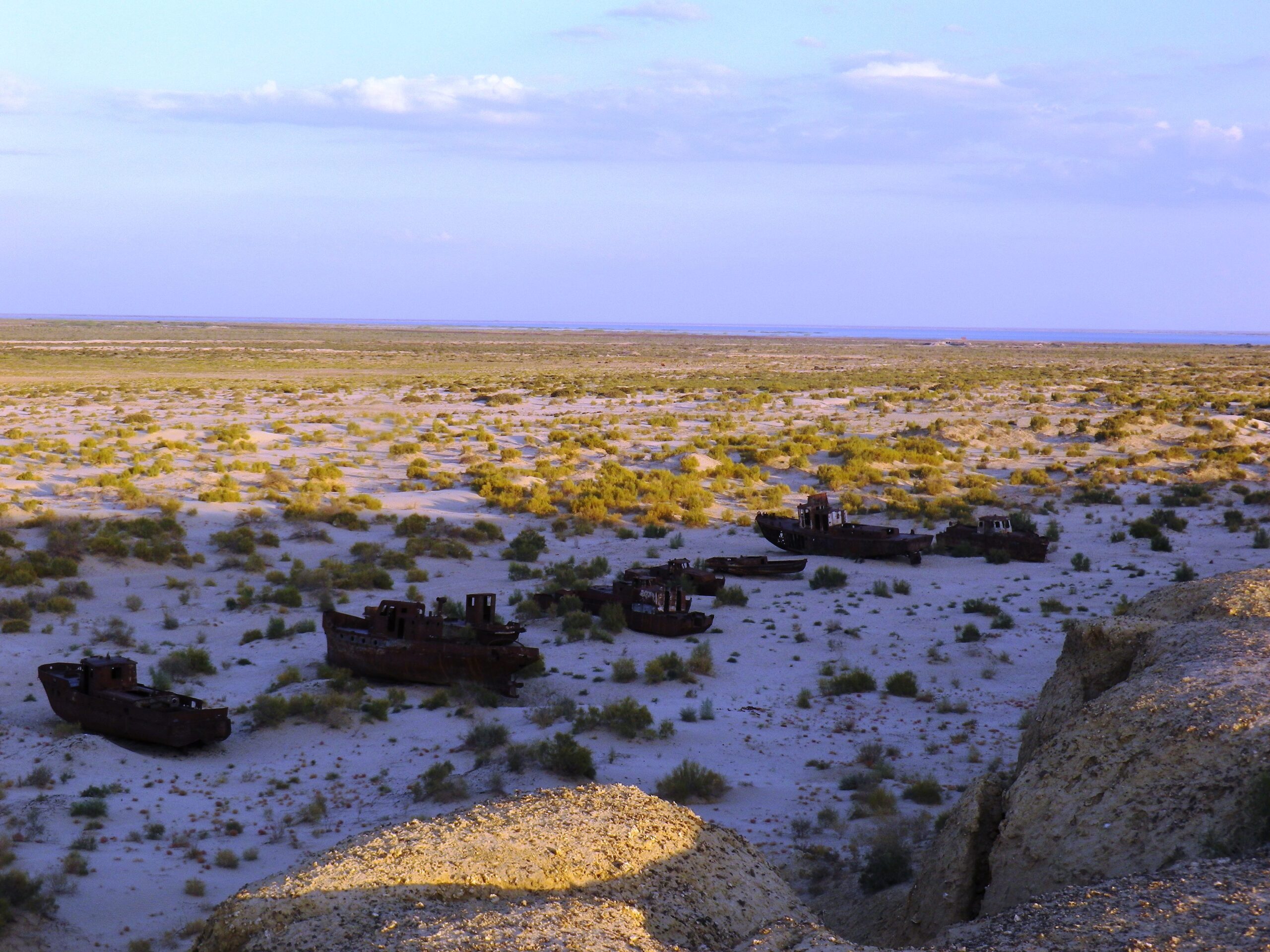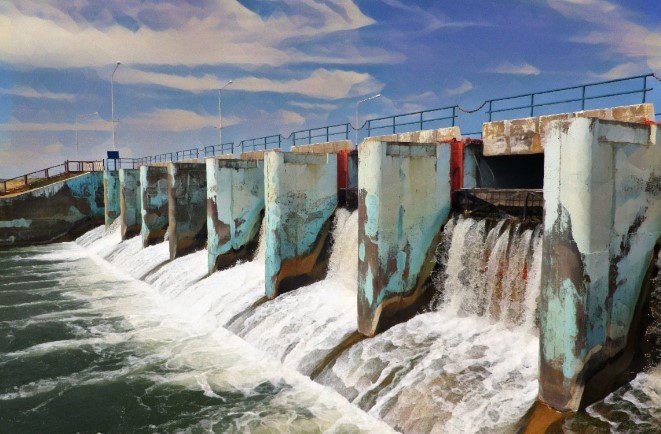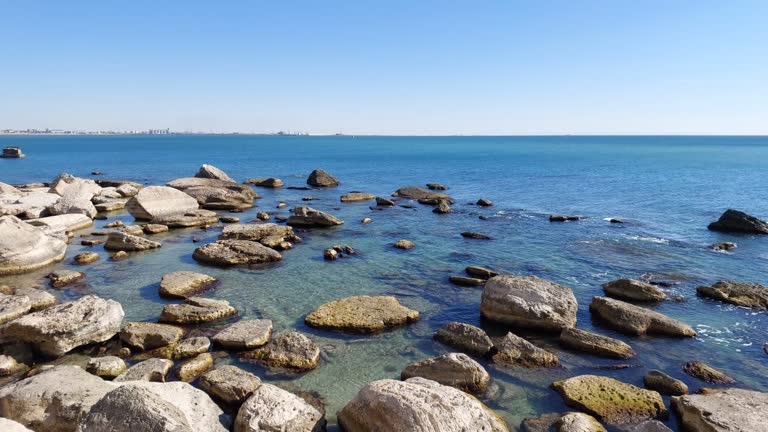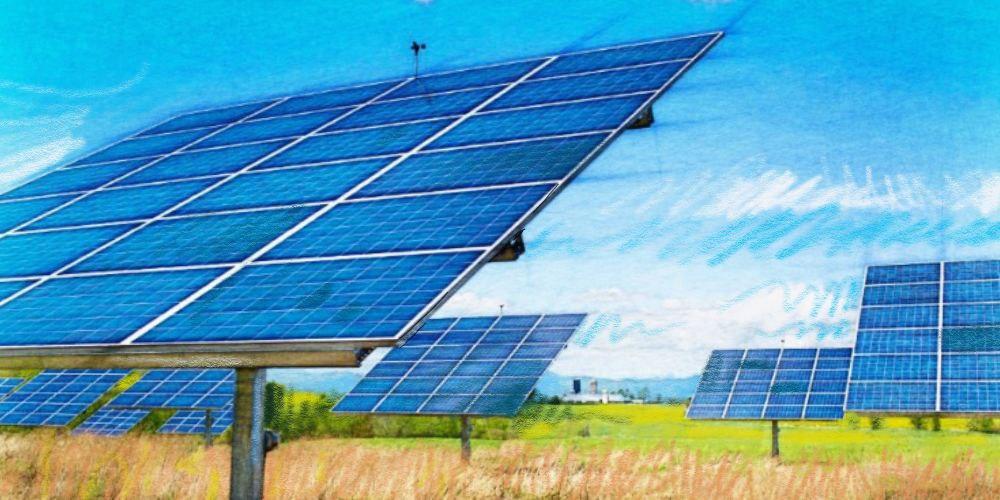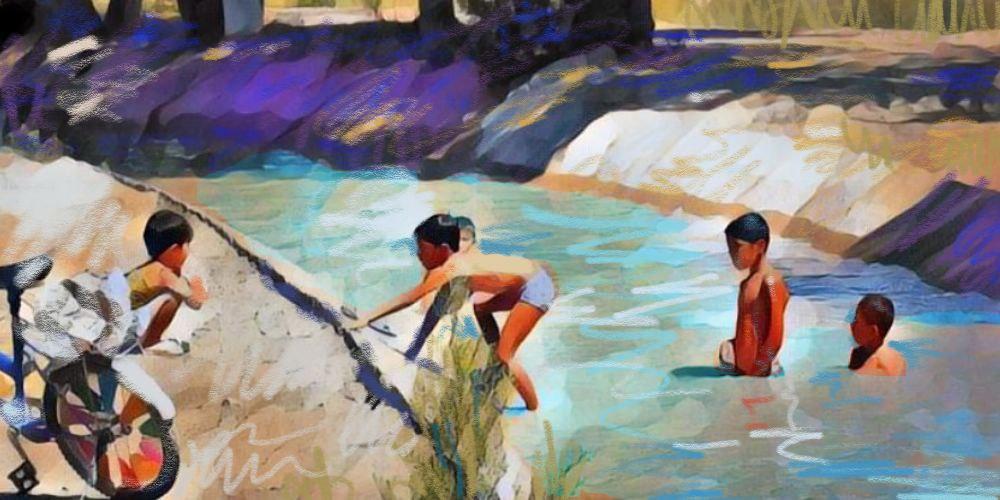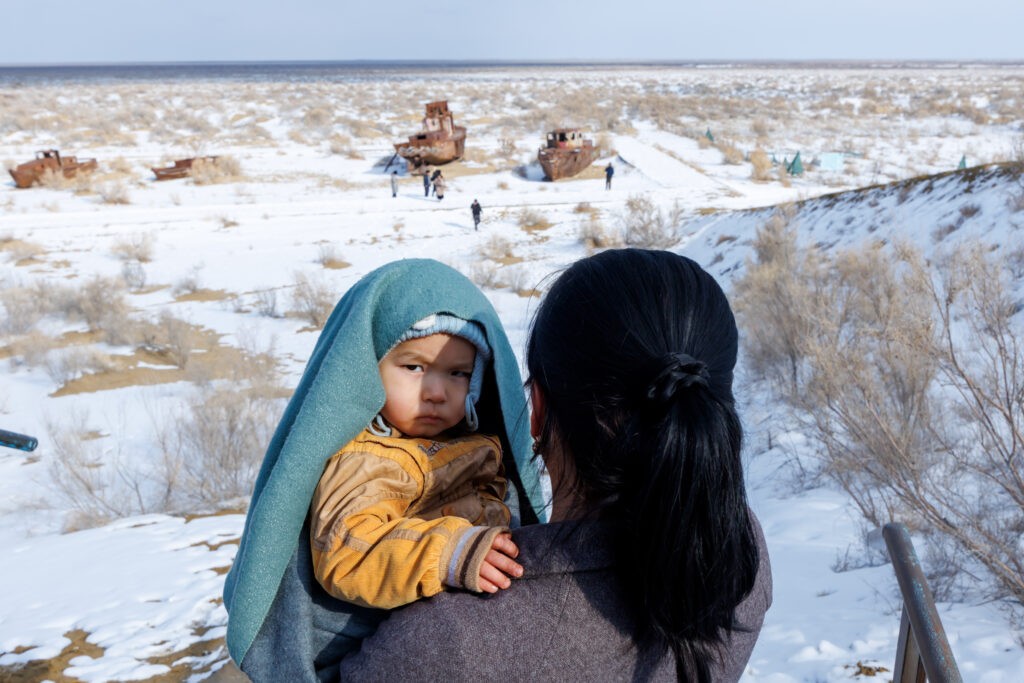Forestry workers and ecological activists in Uzbekistan’s northwestern Karakalpakstan region have begun planting desert plants on dried up sections of the Aral Sea.
Salt and dust carried in the wind cause significant damage to areas adjacent to the Aral Sea and their inhabitants. Every year more than 100 million tons of salt, dust and sand are blown from the bottom of the former Aral Sea and mix into the air.
Up until the late-1990s, the land surrounding the Aral Sea was still cotton fields; today, it’s largely an expanse of salinized grey emptiness. The desiccation of the landscape has led to these vast toxic dust-storms that ravage around 1.5 million square kilometers. Spreading nitrates and carcinogens, these storms – visible from space – used to occur once every five years, but now strike ten times a year.
Once a thriving agricultural center, Karakalpakstan, home to the remaining section of the so-called Large Aral Sea, is now one of the sickest places on Earth. Respiratory illness, typhoid, tuberculosis and cancers are rife, and the region has the highest infant mortality rate in the former USSR.
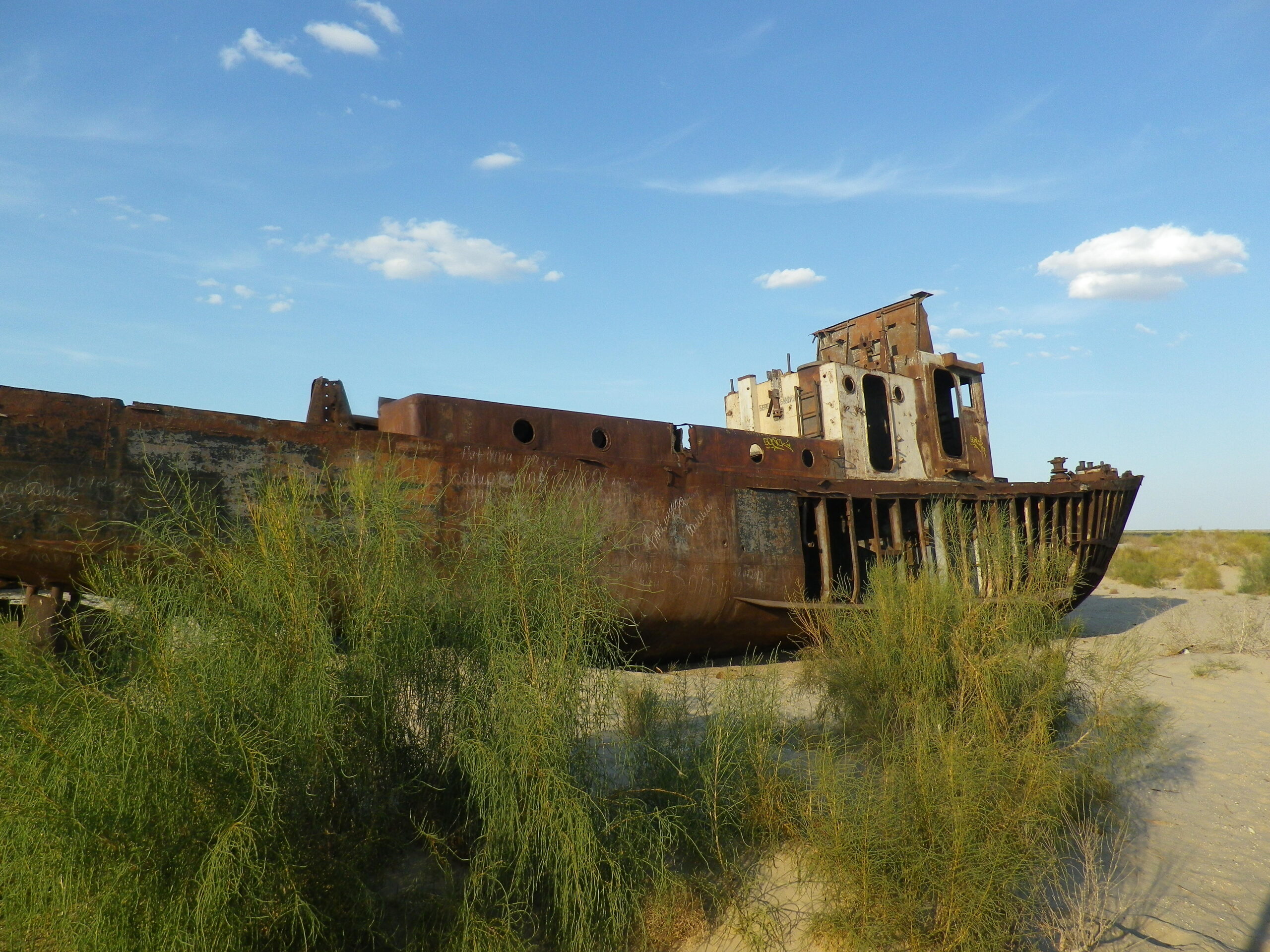
“This year we plan to create green plantations in the most vulnerable places, where the winds with salt and sand come from,” said Zinovy Novitsky, a project manager from the Research Institute of the State Forestry Committee. “We plan to plant trees on 150-200,000 hectares. The country is introducing an effective policy to combat this problem.”
Between 2018 and 2023, 1.7 million hectares of forests were planted on the bottom of what used to be the Aral Sea. To date, forestry enterprises have collected and prepared for sowing 192 tons of desert plant seeds, including 71 tons of saxaul seeds.
Similar plans are being undertaken across the border in Kazakhstan, where, according to the International Fund for saving the Aral Sea in the Republic of Kazakhstan, the so called “Green Aral Sea” being created will make a massive contribution to the process of achieving carbon neutrality. “One saxaul retains up to 4 tons of sand, 1 hectare of four-year-old saxaul absorbs 1,158.2 kg of carbon dioxide and releases 835.4 kg of oxygen per year, [whilst] the shrubby plant, salsola richteri kar absorbs 1,547.8 kg of carbon dioxide and releases 1,116.4 kg of oxygen per hectare. Accordingly, 1.1 million hectares will consume about 1.3 million tons of carbon dioxide.”
